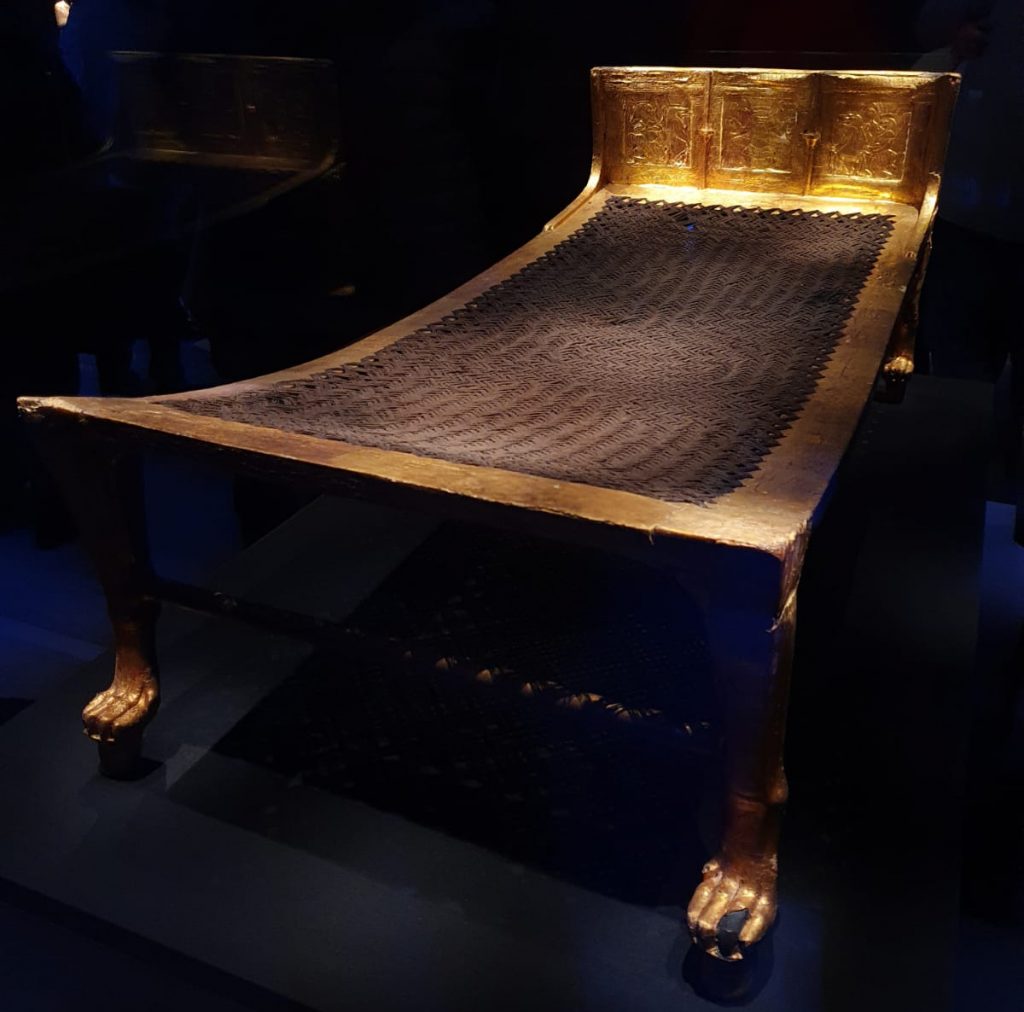TUTANKHAMUN: Treasures of the Golden Pharaoh – Visit the Saatchi Gallery in London to explore the life of King Tutankhamun at the TUTANKHAMUN: Treasures of the Golden Pharaoh event running from now up until Sunday 3rd May 2020.
View more than 150 authentic pieces from the tomb – three times the quantity that has travelled in previous exhibitions – more than 60 of which are travelling outside of Egypt for the first time.

The third of 10 cities to host TUTANKHAMUN: Treasures of the Golden Pharaoh the London showing follows record-breaking stops in Los Angeles and Paris. In Los Angeles, the exhibition was among the most successful in the history of the California Science Centre, while in Paris it became France’s most attended exhibition of all time with over 1.4 million visitors.
This is a once in a lifetime opportunity to experience the wonder and mystery of the boy king before his priceless objects return to Egypt forever.
At the conclusion of the tour, the artefacts will go on permanent display at the Grand Egyptian Museum.
World-renowned archaeologist Dr Zahi Hawass said: “The exhibition is the biggest and most beautiful exhibition of King Tutankhamun’s treasures ever to travel, and a once-in-a-lifetime opportunity no one should miss. This exhibition contains unimaginable ancient treasures you have to see to believe and celebrates the enduring legacy of the beloved boy king and the story of his discovery. This is the last time King Tutankhamun’s treasures will leave Egypt — see them before they return to Egypt forever.”
Tutankhamun’s legacy has been celebrated in the UK throughout the decades with more than 1.6 million people attending the 1972 show at the British Museum.
“We are absolutely delighted to have the privilege of hosting this exhibition, one that not only showcases some of the most significant artefacts in the world but also tells a time enduring narrative,” says Philippa Adams, Director, Saatchi Gallery.
TUTANKHAMUN: Treasures of the Golden Pharaoh is exclusively focused on interpreting the significance and meaning of artefacts, and includes:
Gilded wooden naos containing the pedestal of a statue
One of the most fascinating objects discovered in Tutankhamun’s tomb, this small gilded wooden naos has decorations that show the royal couple—Tutankhamun and his wife—in a scene that reveals intimacy. These apparently domestic themes placed an emphasis on the role played by Queen Ankhesenamon with regard to her husband on earth (with allusions to the coronation) and in the afterlife.
Miniature canopic coffin
During the mummification process, the viscera were dealt with separately from the body. They were embalmed, anointed with oils and gum resins, then wrapped in linen bandages, and finally placed in receptacles called canopic vessels. There were four of the latter, which were most often jars, or even, as with Tutankhamun, miniature coffins. They were placed in a calcite trunk, and each of the four cavities intended for the coffins was closed with a lid bearing Tutankhamun’s effigy. The miniature coffin displayed here was reserved for the liver, an organ placed under the protection of the goddess Isis and Amset, a genie with a human head.


Wooden Guardian Statue of the King
The dramatic, life-size ka statue of Tutankhamun marks his passage from the dark night of the Netherworld to his rebirth at dawn. The black skin symbolises the fertility of the Nile and its eternal resurrection. Gold, the symbol of the sun and the flesh of the gods, represents Tutankhamun’s attainment of divinity. The guardian’s nemes royal headdress represents Re-Khepri, the solar god, at dawn. Another, almost identical statue to this one is wearing a khat headdress, a symbol of the night. Both statues acted as guardians to the burial chamber and are the most complete and spectacular examples of such objects to have been discovered to this day. This is the first time this statue has left Egypt.


Gilded Wooden Bed
The ceremonial bed was probably made for Tutankhamun’s funeral. To ensure the Pharaoh’s safety and keep the evil forces at bay, divine figures were carved on the foot of the bed: Bes, the god who frightened away evil spirits from newborn babies, and Tauret, the hippopotamus goddess, are watching over the king’s eternal rest. It was believed that the dead were only asleep and that they woke up when they were reborn. The living saw sleep as a deathlike state. The gods would speak to the sleepers whose nightmares were proof that they were vulnerable to the supernatural forces of evil. Hence, waking up each day was seen as a form of rebirth.
Poppy Watt
Why not visit The Sculpture Park in Churt?


